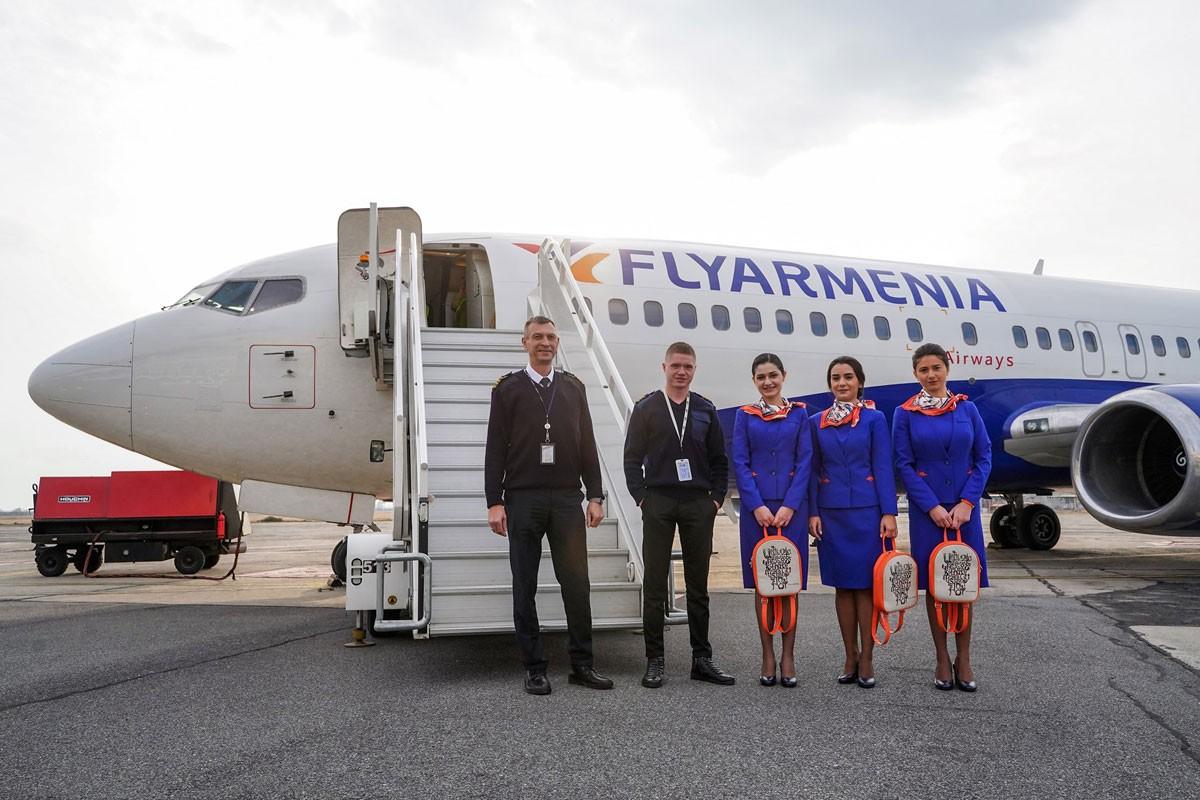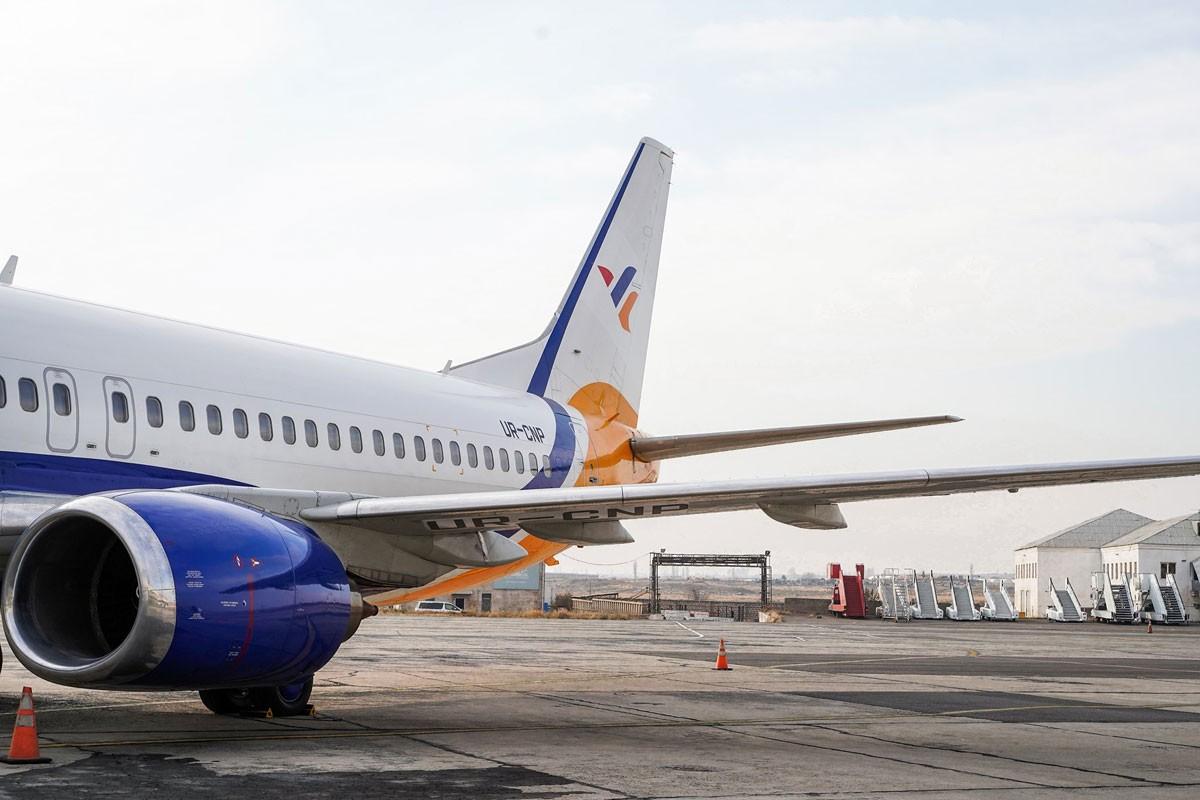
Fly Armenia Airways: Ongoing Issues Prevent the Carrier From Taking to the Skies
Fly Armenia Airways, which was established in October 2019 and received a certificate of aircraft operator on July 2 this year, cannot take to the skies yet. The reason is that Armenia’s Civil Aviation Committee (CAC) suspended the validity of the Air Operator’s Certificate (AOC), only two months after its issuance, on September 3.
It was initially suspended for a month, which was later extended for another month.
Hetq sent a request to the CAC to clarify why Fly Armenia Airways’ license was suspended and whether it was resumed after November 3. On December 8, CAC Secretary General Mikael Zalinyan stated that the operation was suspended because the initial grounds for the suspension had not been fixed.
The CAC, as a basis for the suspension, cited the government's 2015 decision establishing the procedure for issuing an aircraft operator's certificate. According to this procedure, to ensure compliance with the required operating standards, to provide safe and convenient transportation services to the public, the aircraft operator is under constant control.
Clause 34 of the Procedure states that the CAC may suspend or terminate the operation of the AOC during its ongoing monitoring if the carrier does not comply with the requirements of international treaties, flight standards, flight safety and aviation safety standards.
The AOC of Fly Armenia Airways was suspended because, according to the CAC, it was revealed that he aircraft operator does not comply with the terms and conditions under which the certificate was issued. The committee does not specify what the terms and requirements are.
Hetq has written about Fly Armenia Airways before. The company currently offers flights to Russia, the Middle East and Europe. If the carrier's AOC is resumed, however, the issue of flying to Europe, more specifically to the territory of the European Union (Marseille and Prague) is problematic. The point is that the airlines registered in Armenia were included in the European Union’s "blacklist" of on June 2, and the skies over the EU were closed to Armenian carriers.
Despite this, a Fly Armenia Airways representative told Hetq that the airline will not face a problem of leaving for the EU, adding that these flights will not be operated by another airline, there will be no codeshare flights (these are possible to overcome the EU ban solutions), which sounded somewhat odd to our ears.
Hetq asked the CAC about this. The CAC Secretary General issued the following reply.
"As a result of EU restrictions, Armenian registered aircraft are not allowed to fly to EU territory, except for airlines included in the EU Air Safety List (Blacklist- Hetq), which can operate repatriation and humanitarian flights to EU countries. However, the following option is possible for flights to the EU. If the Armenian airline has an aircraft leased from another airline under a wet lease agreement (when the aircraft is transferred to the lessee with the crew, insurance, security of the aircraft), and if that airline has the right to fly to the EU, it must be a TCO certificate carrier or be an airline of an EU member state.”
In other words, the CAC confirms that at present Armenian airlines have no other option for commercial flights to the EU except for wet aircraft leasing or codeshare flights.
In this regard, it is noteworthy that on November 26, Fly Armenia Airways transferred its first Boeing 737-400 aircraft from Ukraine to Armenia. However, it remains with the Ukrainian UR-CNP registration, which speaks of a wet lease of the aircraft. According to the Ukrainian State Registry, the aircraft is operated by the local airline YanAir and owned by the UAE-registered Eastok Avia (FZC).
Although in case of wet lease, the given aircraft remains in the register of its country of registration, Armenia’s Law on Aviation stipulates: "If the aircraft registered in a foreign country is at the disposal of the RoA aircraft operator with the right to operate, the latter is obliged to provide the CAC with the documents related to the aircraft and the relevant contract, as well as to inform about any changes in the contract. The list of such foreign aircraft and their operators (list of foreign aircraft operators) shall be maintained by the Committee. "
In other words, the plane with Ukrainian registration UR-CNP was included in a separate list in Armenia. In response to our question, the CAC stated that a total of five aircraft applications had been received from Fly Armenia Airways. So far, only the above-mentioned plane is shown on the company’s website.
This Boeing 737-400 aircraft was produced in 1989, quite a long time for an aircraft in flight. It all depends not on the year of production, but on the flight hours flown by each plane, the technical work done, and the current state of plane’s fitness. This first Fly Armenia Airways aircraft has been used in many countries in the past, including South Korea, Belgium, Australia, Great Britain, Indonesia, Kyrgyzstan, Iraq, Ukraine, Jordan, Eritrea.
It should be added that Fly Armenia Airways has received the IATA and ICAO codes required for international flights - VF and FBB.
Currently, there are eight airlines registered in Armenia with an aircraft operator's certificate:
Atlantis European Airways LLC - IATA and ICAO codes: 2R, LUR
Armenia Airways CJSC (Armenia Airways) - 6A, AMW
Aircompany Armenia LLC - RM, NGT
Armenian Helicopters LLC (Armenian Helicopters) - KAV
Atlantis Armenian Airlines LLC - TD, AEU
Skyball LLC (Skyball)
Fly Armenia Airways LLC (Fly Armenia Airways) - VF, FBB
NovAir LLC (NovAir) - NAI.
Of these, only Aircompany Armenia and Armenia Airways currently operate regular commercial flights.
Photos from Fly Armenia Airways FB page
 Videos
Videos Photos
Photos


Write a comment